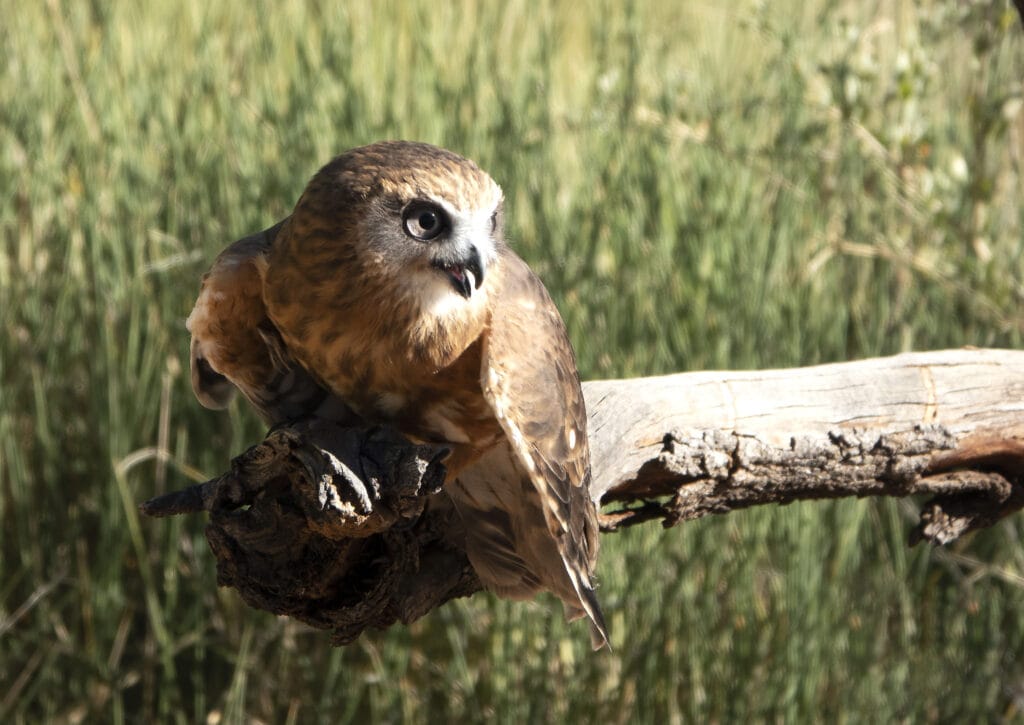The relationship between pest management and birds of prey has always been delicate. In some instances, birds of prey are though of as an essential line of defense against pest animals. It isn’t always an adversarial relationship. For an example, just look to the hawks that many coastal cities are currently employing to chase away out of control seagull populations.
Related Article: Bald Eagles and Other Raptors Are Friends to Dairy Farmers
Still, despite the collaborative role that these birds can play in managing pest animals, the history of this relationship is characterized by disaster. The most famous example of this is probably the DDT crisis. DDT, or Dichlorodiphenyltrichloroethane, is a pesticide that was widely used in the United States from its development in the 1940s until its eventual ban in 1972. During this period, DDT accumulated in the systems of many birds, but birds of prey were hit especially hard thanks to a process known as biomagnification. When smaller mammals and birds got exposed to DDT, the raptors that ate them would absorb the DDT in their bodies. Instead of one animal’s worth of exposure, birds of prey sat at the end of a food chain funnel, collecting more of the harmful substance than other animals.
The results were catastrophic. DDT interfered with the birds’ reproductive processes, causing them to produce eggshells that were too weak to support their own weight. Many birds, like Peregrine Falcons, California Condors, and Bald Eagles, faced the possibility of extinction thanks to the steep decline that this substance brought on. Some species have bounced back since this crisis while other still struggle.
But even with DDT banned, birds of prey are still at risk from pest control methods. A recent study has named Second Generation Anticoagulant Rodenticides (SGARs) as a significant cause of death for owls and frogmouths in Australia. And it isn’t just there. Studies in Canada and New England have also found that SGARs are killing birds of prey. But what makes SGARs so deadly?
The answer bears some similarities to the issues with DDT. That is to say that while one rat or mouse may only carry enough poison to cause fatality in a creature of equivalent size, birds of prey may eat many poisoned animals, increasing their exposure and risk of fatality. Furthermore, SGARs do not kill their victims immediately. Instead, they thin the blood, causing rodents to slowly bleed out internally.
This can take days. Some rodents may continue to eat the poison during this time, meaning that they may carry an even higher concentration in their bodies than what is needed to be fatal. Live rodents who have not yet succumbed to the poison act like an SGAR Trojan Horse, poisoning any predator that eats them. Even when they have not consumed a necessarily lethal dose, raptors who have been exposed to SGARs may be killed or seriously injured by the blood thinning effects of the poison, which can prevent a minor wound from clotting and healing properly.
Where does this leave us? Without birds of prey, I am confident that rodent populations will only rise. And birds of prey are not the only predators affected by SGARs. By poisoning the food chain, we may threaten delicate wildlife while also potentially increasing pest populations in the long run. It is a solution with severe and apparent future consequences.
Popular Article: Long Distance Migrants May Be Resilient to Climate Change Dangers

